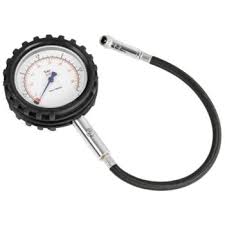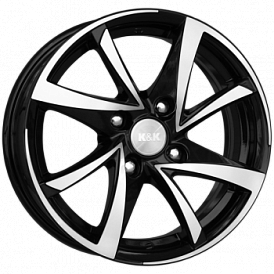How to choose flushing oil and engine flushing fluids
With long-term operation of the engine on one oil, with non-compliance with the replacement intervals, as well as after buying a used car, when not only the replacement intervals, but even the oil grade are often unknown, it makes sense to resort to using the so-called flushing. These are special oils and fluids that have pronounced detergent characteristics that can dissolve soft deposits on the walls of the engine and effectively remove them from the system when changing oil.

We recommend reading articles from an expert on engine oil selection and secrets oil filter selection.
The best manufacturers of flushing oils and liquids
Flushing the engine - a very responsible task. In order to avoid scoring on the walls of the cylinders, as well as clogging of the oil receiver grid with large pieces of oil sludge, preference should be given to quality products from well-known brands:
-
Liqui moly;
-
Mannol;
-
Mobli 1;
-
Wynns;
-
Castrol;
Attention should also be paid to feedback from users who have tried specific products on their vehicles and made appropriate conclusions about performance. You can find them on the Internet at specialized forums devoted to engine oils and car operation in domestic conditions.
Types of flushing oils and technical liquids
Traditional flushing oils

They are basic mineral oils with a powerful detergent package. They are poured into the engine and are used in it for a distance of 100-200 kilometers in a sparing mode of operation. During operation, they affect sediments by gently washing and removing them from the system.
Virtues
-
Ease of operation;
-
Inexpensive;
-
Compatible with many types of cars;
disadvantages
-
Not suitable for modern engines with direct inlet, requiring very liquid oil for correct operation (0w20, 5w30);
-
In one procedure, they are not able to completely clean the engine;
Virtues
-
Ease of operation;
-
Inexpensive;
-
Compatible with many types of cars;
disadvantages
-
Not suitable for modern engines with direct inlet, requiring very liquid oil for correct operation (0w20, 5w30);
-
In one procedure, they are not able to completely clean the engine;
Long term flushing of the oil system

They are special liquids containing a powerful cleaning additive package. They are added to the worked oil for 150-200 kilometers before its replacement. Very well cleaned the engine from old deposits and oily sludge.
Virtues
-
Inexpensive;
-
Do not lead to a change in oil viscosity;
-
Safe for CPG;
-
Well washed engine;
disadvantages
-
Roads;
-
Do not allow the intense style of driving and the presence of high revolutions;
-
Require compliance with operating instructions;
Virtues
-
Inexpensive;
-
Do not lead to a change in oil viscosity;
-
Safe for CPG;
-
Well washed engine;
disadvantages
-
Roads;
-
Do not allow the intense style of driving and the presence of high revolutions;
-
Require compliance with operating instructions;
Five minute washes

Fluids containing a shock package of detergent and anti-wear additives. They are added to the car directly when changing the oil and suggest working in idle mode for 5-10 minutes. Soft sludge is washed off and thinner harder deposits are deposited, while fresh oil performs the final work.
Virtues
-
Even old and hardened deposits are well washed;
-
They are used both independently and in combination with long-term flushing;
-
Do not harm the engine;
disadvantages
-
Enough expensive;
-
It will not be possible to completely drain the fluid, some part remains in the oil system;
-
Do not allow working speed and operation of the car, being poured into the system;
-
Failure to comply with the rules of use can lead to scuffing on the walls of the cylinders;
Virtues
-
Even old and hardened deposits are well washed;
-
They are used both independently and in combination with long-term flushing;
-
Do not harm the engine;
disadvantages
-
Enough expensive;
-
It will not be possible to completely drain the fluid, some part remains in the oil system;
-
Do not allow working speed and operation of the car, being poured into the system;
-
Failure to comply with the rules of use can lead to scuffing on the walls of the cylinders;
Main criteria for selecting engine flushing fluids

Fluid composition and manufacturer's recommendations for its use
In order to reduce to zero the risk of engine damage during the flushing procedure, it is necessary to give preference to proven products from reputable manufacturers, as well as to follow all recommendations for its use.
-
Flushing oil and long-term flushing for the engine should be poured strictly for a certain interval and operated exclusively in a certain mode;
-
The five-minute rinsing is poured into oil heated to the operating temperature, after which they start the car and allow it to idle for 10-20 minutes;
The composition and availability of a full package of additives
Pay attention to the fact that the flushing oil or engine wash liquid contains not only a full complex of detergents, but also effective anti-friction and anti-wear additives. The latter are needed in order to avoid scoring on the cylinder walls and to make the washing process as safe as possible.
Flush or not?
Opinions among car mechanics on this issue vary. One should resort to the washing procedure only when the motorist does not know in which mode the car was operated and what kind of oil was poured into it. For this purpose, it is better to use high-quality long-term or five-minute washes from Liqui Moly and other well-known brands.
If the car is serviced in compliance with the regulations recommended by the manufacturer, and the oil change interval does not exceed 7-10 thousand kilometers, the use of washes loses its meaning. In such a situation, experienced specialists recommend performing 2-3 oil changes with a shortened interval of 3–4 thousand kilometers, thus performing an improvised rinsing.
In the next article we will reveal all the secrets. choice of quality timing belt.
Attention! This material is the subjective opinion of the authors of the project and is not a guide to purchase.













